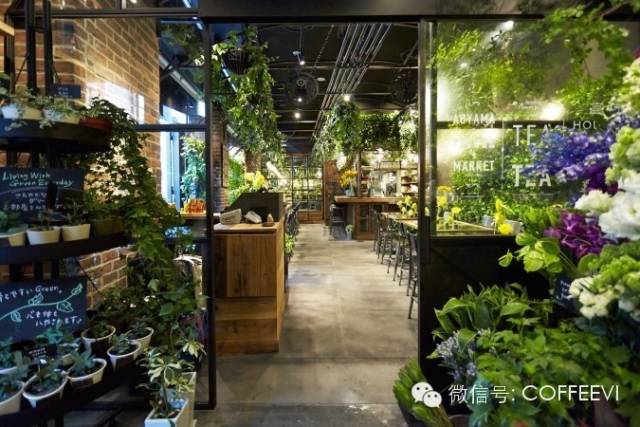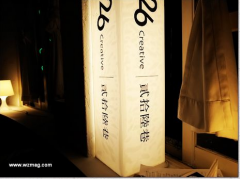Japanese girl's dream adventure 798 Tree Cafe
The height of summer in Beijing is coming. As if to tell the world, the torrential rain, accompanied by lightning and thunder, lingered in Beijing for a whole week, and the temperature quickly climbed to 34 degrees. However, in such hot and humid weather, among the numerous branches and green leaves of poplar, gently touching its straight and slender trunk and gazing at the lush leaves, all the heat seems to disappear, refreshing and refreshing.

This is the treehouse coffee shop "Coffee on the Tree" gently embraced by poplar trees. Located in the 798 Art District, this chic coffee shop has a unique view from the rooftop terrace-behind the gentle and elegant gallery galleries with a strong artistic atmosphere, there are several rugged chimneys rising from the ground, which immediately makes people feel surrealistic, and the national boundaries and life are gradually blurred, making people almost forget where and when they are for a moment.
I like it here and decide to stay.
It was Ms. Kumiko Ishigaki who recommended this cafe to "fall in love with Beijing". She is 29 years old with a bright and cheerful smile. She now runs TAM (Town Art Museum), an urban theme gallery owned by SA, a Japanese architecture firm.
Ishigaki said that when she first came to Beijing for the company interview, she was brought here by a colleague of the company.
"at that time, I knew nothing about Beijing. I didn't even know where it was on the map. But when I came here, I was deeply moved by the green streets. When I sat on the terrace on the roof, I felt vaguely as if I was tasting tea on a branch, feeling tranquil and leisurely. I thought at that time that there was such a great cafe here that it would be suitable for people to live for a long time. "
The scale of the 798 Art District also surprised her: "such a large space is basically impossible in Japan." It's close to the size of a city. Some galleries are almost like a gymnasium, and every work carries a lot of weight. This kind of momentum and energy almost makes me fall to the ground. "
Committed to spreading Japanese art and culture
Ishigaki majored in Japanese art history at university. After graduation, she worked for an art company that specializes in hanging pictures. However, she always had the idea of introducing Japanese culture and art to more people, so she moved to a publishing-related production company. However, the work there has nothing to do with the art and Japanese culture that she has in mind, but only editors and contributors to travel magazines. Work is so busy that sometimes I can only go home for three hours a week. At that time, Kumiko deeply felt the gap between ideal and reality. At that time, there was a turnaround, and a company offered her an olive branch-whether to come to Beijing to assist in the operation of the gallery.
She has never been to China and knows nothing about China. And she doesn't speak Chinese, and English gives her a headache. Not only that, the protests against Japan broke out in various parts of China at that time, and the relevant news is still fresh in her memory, so she was hesitant at that time.
But managing a gallery herself is an irresistible temptation for her. So she finally decided to go to Beijing to see for herself what China and the company looked like.
The president of the company stayed in Beijing to work after graduating from graduate school. He said to me, 'China has accepted me and nurtured me, and I want to give back to China. We got a whole floor here, and I don't want to use it to sell things. I hope to make this place more rich and colorful through cultural means, which is my 'gratitude' to China.' At that time, I thought that this person could have the idea that if I could work under such a person, maybe I could achieve my dream. " A week later, Ishigaki made up her mind to come to Beijing, and four months later, in September 2013, she began her career in Beijing.
"when I came here, I found out that there was nothing to have a headache. On the contrary, in Japan, no matter how simple it is, once the complicated relationship between superiors and subordinates, ah, human relations, ah, is involved, it will have to be managed one by one, which is very troublesome. But in Beijing, if you just say what you want to do, everyone will understand. However, the Chinese side attaches great importance to the deadline and schedule of work, and all projects pursue 'speed'. Like managing this gallery, people also told me that they wanted me to produce results in three years. "
At that time, Ishigaki, who knew neither Chinese nor an acquaintance in China, did not know how to work when she first arrived in Beijing. However, in just six months, she has hosted several planning exhibitions. Today, she is fascinated not only by art, but also by the company's main urban design.
"many of the planning cases I have done are related to the construction business. Gradually, I found that the so-called city refers not only to the buildings in the city, but also to the people who live there and the various cultures that have been nurtured. With architecture, people and culture, it can be said to be a complete city. Our urban design is to create a 'container' that can contain the memory and culture of the city itself. This kind of thinking is closely related to the art I am engaged in now. It is interesting to think about the work of galleries and architecture from this point of view. "
Open a sunny coffee shop to provide energy for young people
Speaking of his future plans, Ishigaki said, "at present, I will continue to work in Beijing. In the future, I want to spread Asian art and culture to everyone." Then, when I'm about 60, I want to open a small cafe, not very big, but very elegant, and then pick a place with good sunshine and put some art books to create a place that can provide energy for young people. "
She said that precisely because she had experienced a period of confusion and did not know what to do and what she could do, she was able to understand and understand the confusion and unease of young people. "I have no special talent and there are a lot of things I can't do, so I can fully understand the feelings of ordinary people like me. However, I think it is because we are ordinary people that we are able to build a link between ordinary people and talented artists. " When he said these words, Ishigaki's face was brimming with enthusiasm and confidence in his work.
It is a miracle that like-minded people get to know each other in the vast sea of people. Ishigaki looks forward to the emergence of these moments, so he has a special preference for coffee shops that allow people to meet each other. In retrospect, it can be said that it was this "coffee on the tree" that made her decide to stay in Beijing and engage in the work of connecting people and art. These may be the "encounter" of fate.
◆ falls in love with Beijing: coffee on the tree (The High Place)
798 Art District, No. 4 Jiuxianqiao Road, Chaoyang District, Beijing
Enter from entrance 4 of 798 Art District, go straight along 798 Road, located on the left side of the road.
Important Notice :
前街咖啡 FrontStreet Coffee has moved to new addredd:
FrontStreet Coffee Address: 315,Donghua East Road,GuangZhou
Tel:020 38364473
- Prev

Taipei Design Cafe Ersi Lu Lane Studio
Ersi Lu Lane is located at the entrance of Ximenting Tiqing Street (2nd floor, 131Xining South Road, Bei Shi). This is a coffee shop run by Francis, a designer who once participated in the Campo Creative Market. His style is very distinct in the storefront, with a black strange pen to outline the face on the white object, circle after circle of complicated and varied Facebook finally formed a work with childish interest.
- Next

An unattended cafe that pays for it entirely by self-consciousness.
Vault, a cafe in Wali, north Dakota, has been unguarded since it opened in October 2013, relying on customers' willingness to pay, odditycentral.cn reported on June 30. It is reported that the cafe serves coffee, soda and other drinks and some refreshments. The shop is unguarded, but it is equipped with credit card machines and coin boxes, which customers can pick up by themselves.
Related
- What brand of black coffee is the most authentic and delicious? what are the characteristics of the flavor of the authentic Rose Summer Black Coffee?
- Introduction to the principle and characteristics of the correct use of mocha pot A detailed course of mocha pot brewing coffee is described in five steps.
- Which is better, decaf or regular coffee? how is decaf made?
- How much is a bag of four cat coffee?
- How about four Cat Coffee or Nestle Coffee? why is it a cheap scam?
- Which is better, Yunnan four Cats Coffee or Nestle Coffee? How about cat coffee? is it a fake scam? why is it so cheap?
- How about Cat Coffee? what grade is a hoax? which instant coffee tastes better, four Cat Coffee, Nestle Coffee or G7 coffee?
- Process flow chart of coffee making-Starbucks coffee making process what coffee tastes good at Starbucks
- The top ten best coffee beans in the world Rose summer coffee or Tanzanian coffee tastes good
- Yunnan four cat coffee is good to drink?_four cat coffee is a big brand? four cat blue mountain coffee is fake?

